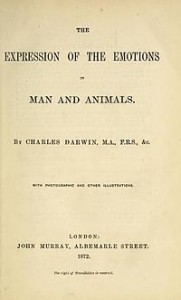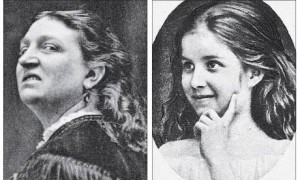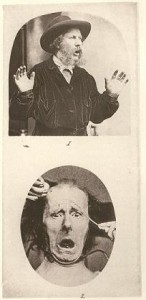
Figure 1 – The title page of Charles Darwin’s “The Expression of Emotions in Man and Animals.” From the Open Library and in the public domain.
Today I’d like to talk about a book – Charles Darwin’s “The Expression of Emotions in Man and Animals.” Paul Johnson has suggested, and I believe rightly so, that Darwin’s magnum opus on the Theory of Evolution really consists of three major works: “The Origin of Species (1859),” “The Descent of Man (1871),” and “The Expression… (1872).” In “The Expression…,” Darwin seeks to trace the animal origins of human facial expressions such as: the pursing of the lips in concentration and the tightening of the muscles around the eyes in anger and efforts of memory.
In composing the book, Darwin circulated a questionnaire to scientist around the world so as to gather data to test the universality of emotional expression in different ethnic groups. Other sources (see Figure 2) were photographs of babies, children, and actors, and also descriptions of the behaviour of psychiatric patients at the West Riding Lunatic Asylum at Wakefield in West Yorkshire. This kind of thorough attention to detail was characteristic of Charles Darwin, characteristic in fact, of much of Victorian Science, and is one of the reasons that, even today, he is so compelling in his arguments. Darwin also performed experiments involving electrical stimulation of the facial muscles to induce expression and elicit emotions (other than fear of electrocution) from his subjects (see Figure 3).

Figure 2 – Images of hatred and love from Charles Darwin’s “The Expression of Emotions in Man and Animals,” in the public domain.
This book was published in 1872 and represents a cornerstone in the history of science (most particularly the then fledgling science of psychology) and photographic book illustration. It was one of the first scientific books to use photographic illustrations. Darwin saw this as imperative saying: “Several of the figures in these seven Heliotype Plates have been reproduced from photographs, instead of from the original negatives ; and they are in consequence somewhat indistinct. Nevertheless they are faithful copies, and are much superior for my purpose to any drawing, however carefully executed.”

Figure 3 – Plate 2 from Charles Darwin’s “The Expression of Emotions in Man and Animals.” In the top image the photogrpher, Oscar Rejlander, using himself as subject. The bottom image shows and example of Darwin’s experiments on electrical stimulation of expression and emotion. In the public domain.
What exactly is a heliotype and why was Darwin concerned about its loss of sharpness? A heliotype was a photomechanically produced plate for pictures in a book that was made by exposing a gelatin film under a negative. The film was then hardened with chrome alum, and the pages of the book printed directly from it. What Darwin was interested in was a faithful and scientific rendering of the faces in the pictures and he was willing to suffer a little loss of sharpness to get the realism.
Darwin saw photography as a means to convey scientific observation, both accurately and in detail. Indeed, in a sense, the reader gets to observe for his/herself. He set a new course and was followed by other luminaries, such as Eadweard James Muybridge (1830-1904) and his work on animal and human locomotion.
But beyond science, there is something wonderful and often humorous about the photographic illustrations of “The Expression…” This immediately raises an important question. Who was Darwin’s photographer. The answer is Oscar Gustave Rejlander (1813-1875). He is the man with the muttonchops in Figure 3. Rejlander used himself as subject for many of the heliotypes in Darwin’s book.
Although a somewhat controversial figure in his day, he was one of the great British photographers and a master experimentalist with the new medium. As in science, the Victorian era was a golden and innovative time in English photography. Who was Oscar Gustave Rejlander? That is the story I will tell in tomorrow’s blog.
